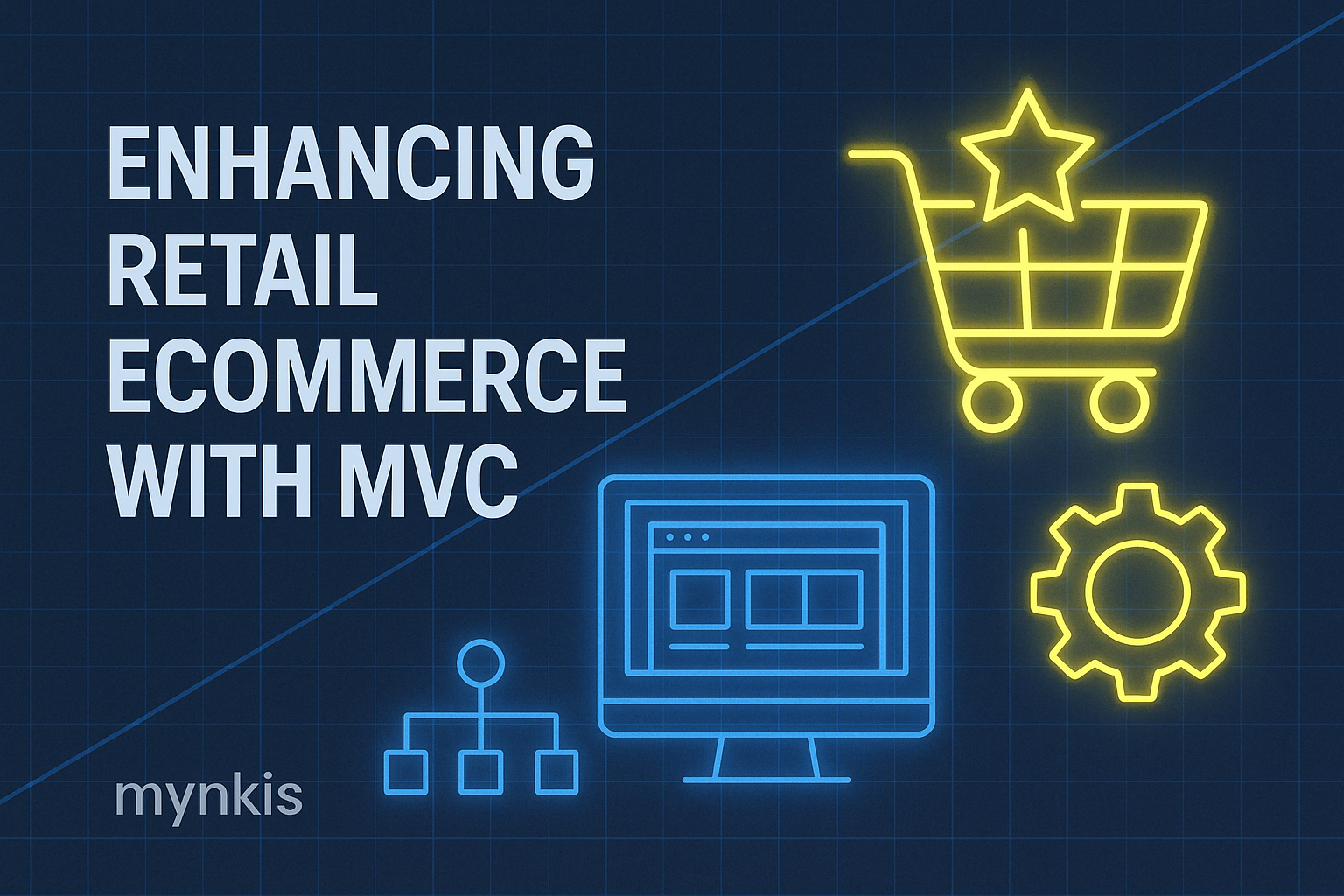Schedule a Demo
Retailers often grapple with the challenge of maintaining an online presence that's both user-friendly and SEO optimized. Enter the Model View Controller (MVC) framework, a design pattern that could very well be the cornerstone of your e-commerce success. In my experience working with retailers, I've seen firsthand how MVC can transform a simple online store into a robust platform that seamlessly marries functionality with aesthetics.
MVC is all about clarity and efficiency. Let's break it down into its key components:
When implemented well, the separation of these elements within an MVC structure not only makes your site more manageable but can also significantly enhance your site's SEO performance.
One of the most crucial aspects for retailers today is visibility. Without a steady influx of organic traffic, relying solely on ads can be both costly and unsustainable. MVC can actually play a pivotal role in your SEO strategy. By organizing your website's structure clearly through MVC, search engines can more easily index your site's content, improving your rankings.
The 'View' part of MVC, for instance, can be optimized for SEO. Ensuring that your product listings and content are keyword-rich and user-friendly not only caters to search engines but also improves the overall user experience. Similarly, the 'Model' can ensure accurate data retrieval and management, which is essential for maintaining up-to-date, relevant content – another SEO plus.
Beyond SEO, MVC is stellar for user experience (UX). In the MVC paradigm, changes to the 'View' do not necessitate changes in the underlying data model. This separation allows for rapid iterations in design without disrupting the core functionality of the e-commerce site.
I recall working with a client where we revamped their entire site design overnight using MVC. The next morning, their website not only looked more modern but also functioned more efficiently, all without touching the existing sales system. Retailers, this is something you really want to lean into.
MVC's inherent modularity also means you can scale your retail platform efficiently. Add new categories, streamline checkout, or improve your payment processing without needing a full site overhaul.
Imagine seamlessly integrating a new payment system or adding a section for seasonal products. With MVC, these enhancements can be made with minimal disruption to the rest of the site. This modularity is particularly useful for retailers operating with dynamic inventory and rapidly changing products.
To illustrate the effectiveness of MVC, consider a medium-sized retailer with an established online presence that wanted to boost both its SEO and user experience. We implemented an MVC architecture, restructuring the site to clearly separate their product database (Model), product display (View), and customer interactions (Controller).
Post-implementation, the site saw a 30% increase in organic traffic and a notable improvement in user engagement metrics. The flexibility of MVC allowed them to quickly optimize various aspects of their site for better SEO outcomes while simultaneously enhancing their aesthetic appeal, maintaining the sleekness typical of leading California web designs.
For those interested in the tech, implementing MVC does require a technical understanding of web development. Languages like Ruby on Rails, ASP.NET, and PHP frameworks such as Laravel, are popular for building MVC architectures. Each has its strengths and can be tailored to fit your business needs.
Adopting MVC isn't without its challenges. It requires an initial investment of time and resources to set up properly. If your team isn't well-versed in MVC, training may be necessary.
However, from my experience, this is a small price to pay for the long-term benefits of an MVC-based system. Retailers who might shy away due to complexity should consider the scalability and management efficiencies they stand to gain.
Technology in e-commerce evolves at breakneck speed. MVC, with its proven architecture, has been adopted by countless successful retail platforms. But staying ahead means not just adopting but continually refining your MVC strategy.
Consider periodic audits to ensure your MVC implementation remains optimal. Look to leading tech enterprises like Amazon for inspiration; they've employed sophisticated versions of MVC to manage millions of products and vast user bases.
As the digital retail landscape shifts, MVC continues to offer a stable foundation upon which to build. Incorporating advanced SEO strategies and prioritizing user experience can set your store apart in an increasingly crowded marketplace.
Thinking beyond today, imagine how emerging technologies like AI and machine learning can further integrate with an MVC model to offer personalized shopping experiences. The possibilities are endless, but it starts with the right architecture – MVC.
